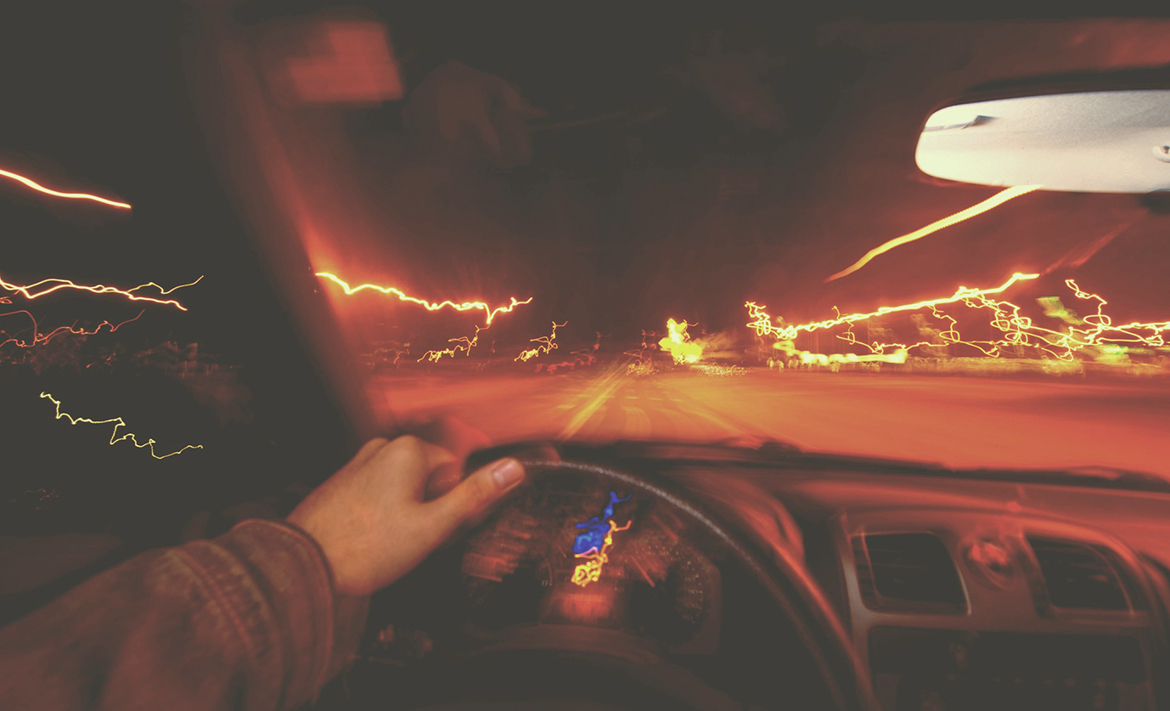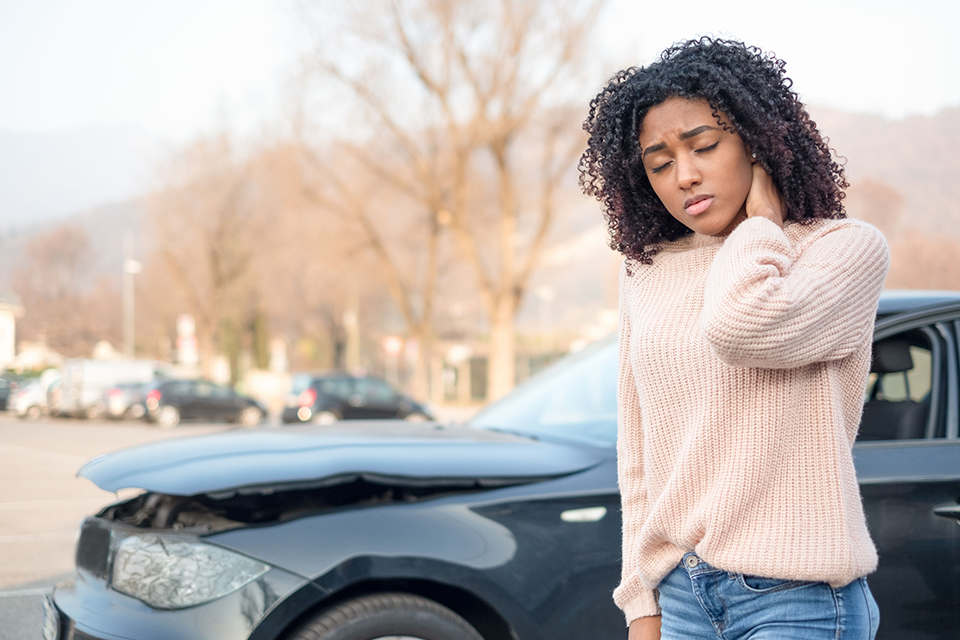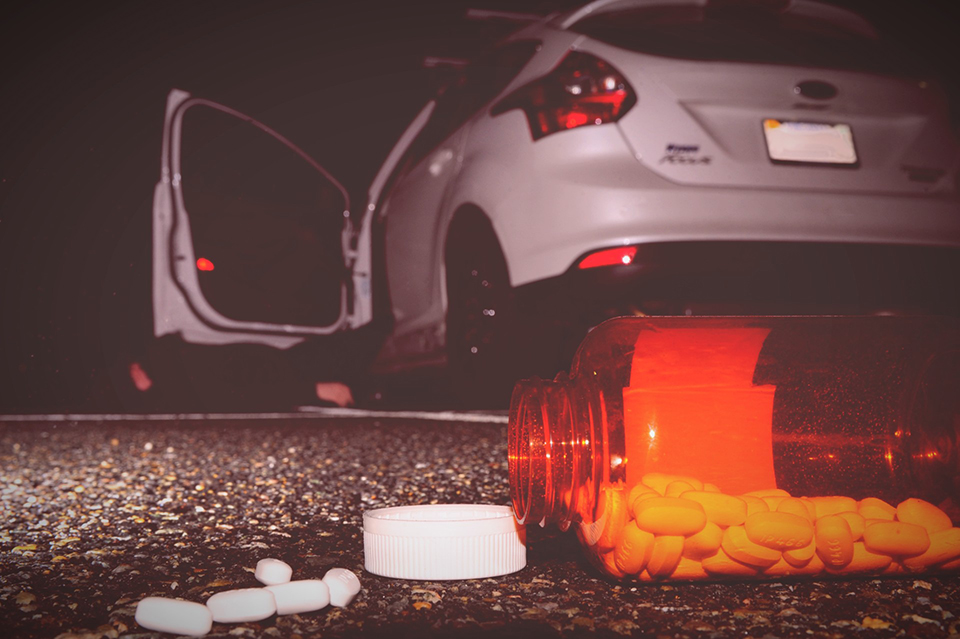
Since the National Institute on Drug Abuse announced that drug overdoses kill more people than car accidents, the threat of teen overdoses has been center stage nationwide. However, drugged driving is a threat as well. This threat remains an ongoing issue that parents need to address.
Let’s take a quick look at drugged driving facts to understand the threat in greater detail. Drugged driving is driving a vehicle while impaired due to recent drug use and the resulting intoxicating effects of taking those drugs. Driving under the influence of narcotics makes a vehicle as unsafe as the influence of alcohol. This occurrence is frighteningly common.
The 2017 National Survey on Drug Use and Health states that 21.4 million people aged 16 or older drove under the influence of alcohol in the past year, and 12.8 million drove under the influence of illicit drugs. Although drugged driving laws are being enforced nationwide, such enforcement by police and highway patrol officers is not enough. This enforcement is not the only means to decrease and prevent drugged driving deaths.
The question is now not just whether a teen has been drinking or taking drugs, but whether or not they are driving while drinking or taking drugs. Hence, the intoxicating effects of substance use disorder lead to impairment. If a teenager’s driving ability is impaired, the risk of death skyrockets.
Impairment Effects of Teen Drugged Driving
Common adverse effects of include the following:
- Weaving in and out of lanes
- Diminished basic judgment and poor decision making
- Lowered reaction time
- Loss of coordination in tandem with lowered inhibitions
- Extreme drowsiness or dizziness caused by marijuana or opioids
- Increased speeds and reckless behaviors caused by stimulants
- Easily distracted due to lowered attention span
A challenge is that the impairment effects of drugged driving vary by drug. Thus, the impairment effects of opioids and marijuana are quite different from the impairment effects of cocaine and crystal methamphetamine. According to NIDA, it’s hard to measure the impact of drugged driving because there are so many drugs. It’s hard to test for all of them. As NIDA explains in their facts on drugged driving —
- A comprehensive roadside test for drug levels in the body doesn’t yet exist.
- Some drugs can stay in your system for days or weeks after use, making it difficult to determine when the drug was used, and therefore, how and if it impaired driving.
- Police don’t usually test for drugs if a driver has been drinking and has reached an illegal blood alcohol level. Since there’s already enough evidence for a DUI charge, drugged driving becomes a secondary concern.
- Many drugged driving accidents are caused by drug and alcohol cocktails. It’s almost impossible to determine what substance caused an accident.
Rationalizations & Teen Drugged Driving
Today, teen drugged driving can lead to extremely grim long-term consequences, including drugged driving deaths. How many times have adolescents rationalized driving while high on drugs? They say something like, “I’m not that buzzed. Nothing will ever happen to me. It’s not a long drive home. I can handle it.” Maybe they continue to excuse the behavior with, “I’ve never had a problem in the past. I’m a really good driver. It’s only a couple of miles. I’ve managed it before”
Indeed, teens are susceptible (as everyone is at times) to lack of judgment. However, they are a lot more susceptible to this than adults to this extreme lack of discernment. Teenagers lack knowledge born of past experience, and they are highly vulnerable to peer pressure. Sadly, when it comes to teenagers and drugged driving, peer pressure leads to critical, or even fatal, consequences.
The Proximity of Teen Drugged Driving
Many teens continue to believe that it’s not dangerous to drive a short distance while a little bit high. Teenagers excuse this behavior because they are only taking local roads and avoiding highways. After all, the really big accidents all happen on the highway, right? However, nothing could be further from the truth.
The statistics about teen drugged driving and proximity do not lie:
1. According to an article archived in US National Library of Medicine at the National Institutes of Health, 77 percent of MVC (Motor Vehicle Collisions) occurred within 10 miles of a driver’s home.
2. According to the National Highway Traffic and Safety Administration, approximately 52 percent occur of all car accidents happen within a 5-mile radius of a driver’s home.
3. According to a driver accident study in Great Britain, one in three road accidents (33 percent) happen a mile or less from a driver’s home.
Teen Drugged Driving All Too Common
Another mistake that teenagers make when rationalizing drugged driving is that only hard drugs use results in accidents caused by teen drugged driving. Once again, nothing could be further from the truth. All across the country, teens are dying in car accidents due to drugged driving from all kinds of drugs ranging from now legal marijuana to hardcore opioids. It does not matter the type of drug. What matters is that all drugs reduce reaction time and have some intoxicating effects.
Another serious issue with teen drugged driving is that teenagers mix drugs with alcohol or other drugs. In doing this, they create a deadly cocktail that can easily lead to impaired driving and an increased loss of control, resulting in drugged driving deaths and tragic consequences for families. Such drug cocktails that lead to teen drugged driving is surprisingly common.
According to the Governors Highway Safety Association, 43.6 percent of fatally injured drivers in 2016 tested positive for drugs and over half of those drivers were positive for two or more drugs. Additionally, a recent national survey showed that 22.5 percent of nighttime weekend drivers tested positive for a variety of illegal, prescription, and/or OTC drugs that impair driving. (Drug-Impaired Driving: A Guide for States, April 2017. NHTSA 2014 Drug-Impaired Driving Survey). Indeed, the use of two or more drugs at the same time, including alcohol, amplifies the impairing effects of each drug a teenager has consumed. If one drug is harmful, multiple drugs are a disaster waiting to happen.
Teen Drugged Driving and Marijuana
Marijuana is a particular problem today when it comes to teen drugged driving. Indeed, the statistics about drugged driving and marijuana are startling:
- A recent study conducted by Liberty Mutual Insurance and Students Against Destructive Decisions (SADD) found that a third of all teens believe it is legal to drive under the influence of marijuana.
- Even more incredible, 27 percent of parents thought it was legal.
- Only 68 percent of teens surveyed believed driving while high is dangerous.
- Also, 22 percent of teens admitted that driving while high on marijuana is common among their friends.
Prevention Techniques to Stop Teen Drugged Driving
Here are prevention techniques for teenagers to stop drugged driving. These prevention techniques were developed by the National Highway Traffic Safety Administration (NHTSA):
- Discuss the dangers of drugged driving in advance. Use the tools of education and awareness to prevent disaster.
- Make sure a teenager’s phone is charged, and they know who to call if they get into a precarious situation, such as when they believe their only option home is with a drugged driver.
- If drugs are being used at a party, designate a sober driver, call a cab, or use a ride-hailing service.
- Don’t let friends get behind the wheel if they’re under the influence of drugs. Although taking away keys might seem uncool, it might also save a life.
- Download NHTSA’s SaferRide app from Google Play or the iTunes Store to help a teen when intoxicated or high call a friend or taxi, pinpoint their location and arrange to be picked up.
- It’s the responsibility of the host of a party to make sure that their intoxicated guests leave with a sober driver and do not drive while high.
- Everyone should always wear a seat belt—it’s a key best defense against impaired drivers.
Although these prevention techniques seem basic, they are very effective when put into practice. The first frontline of the battle against teen drugged driving is education and awareness. Thus, all parents need to be on that frontline, fighting tooth and nail to save teenagers from themselves and their recklessness at all costs.




